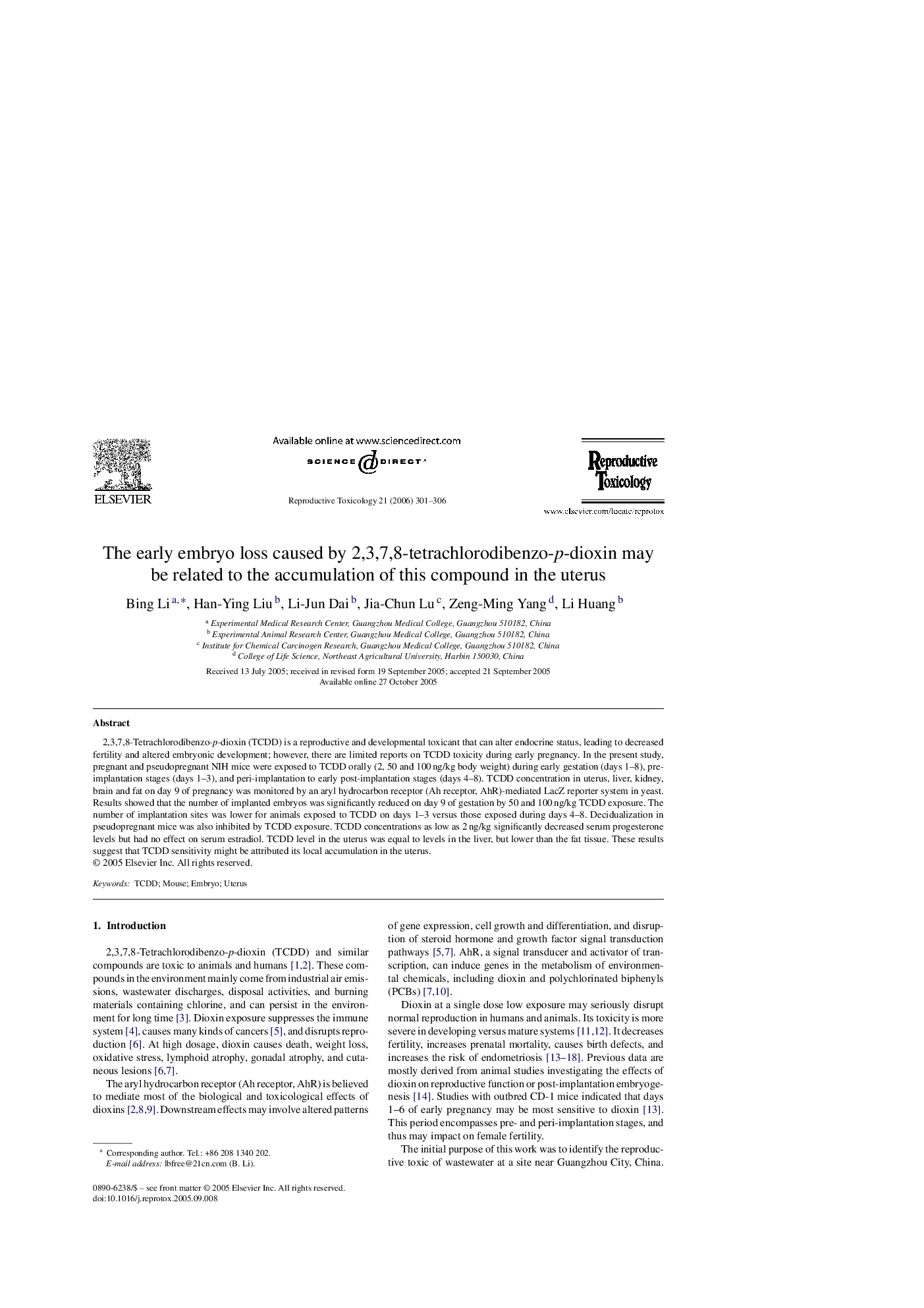| کد مقاله | کد نشریه | سال انتشار | مقاله انگلیسی | نسخه تمام متن |
|---|---|---|---|---|
| 2595383 | 1132320 | 2006 | 6 صفحه PDF | دانلود رایگان |

2,3,7,8-Tetrachlorodibenzo-p-dioxin (TCDD) is a reproductive and developmental toxicant that can alter endocrine status, leading to decreased fertility and altered embryonic development; however, there are limited reports on TCDD toxicity during early pregnancy. In the present study, pregnant and pseudopregnant NIH mice were exposed to TCDD orally (2, 50 and 100 ng/kg body weight) during early gestation (days 1–8), pre-implantation stages (days 1–3), and peri-implantation to early post-implantation stages (days 4–8). TCDD concentration in uterus, liver, kidney, brain and fat on day 9 of pregnancy was monitored by an aryl hydrocarbon receptor (Ah receptor, AhR)-mediated LacZ reporter system in yeast. Results showed that the number of implanted embryos was significantly reduced on day 9 of gestation by 50 and 100 ng/kg TCDD exposure. The number of implantation sites was lower for animals exposed to TCDD on days 1–3 versus those exposed during days 4–8. Decidualization in pseudopregnant mice was also inhibited by TCDD exposure. TCDD concentrations as low as 2 ng/kg significantly decreased serum progesterone levels but had no effect on serum estradiol. TCDD level in the uterus was equal to levels in the liver, but lower than the fat tissue. These results suggest that TCDD sensitivity might be attributed its local accumulation in the uterus.
Journal: Reproductive Toxicology - Volume 21, Issue 3, April 2006, Pages 301–306